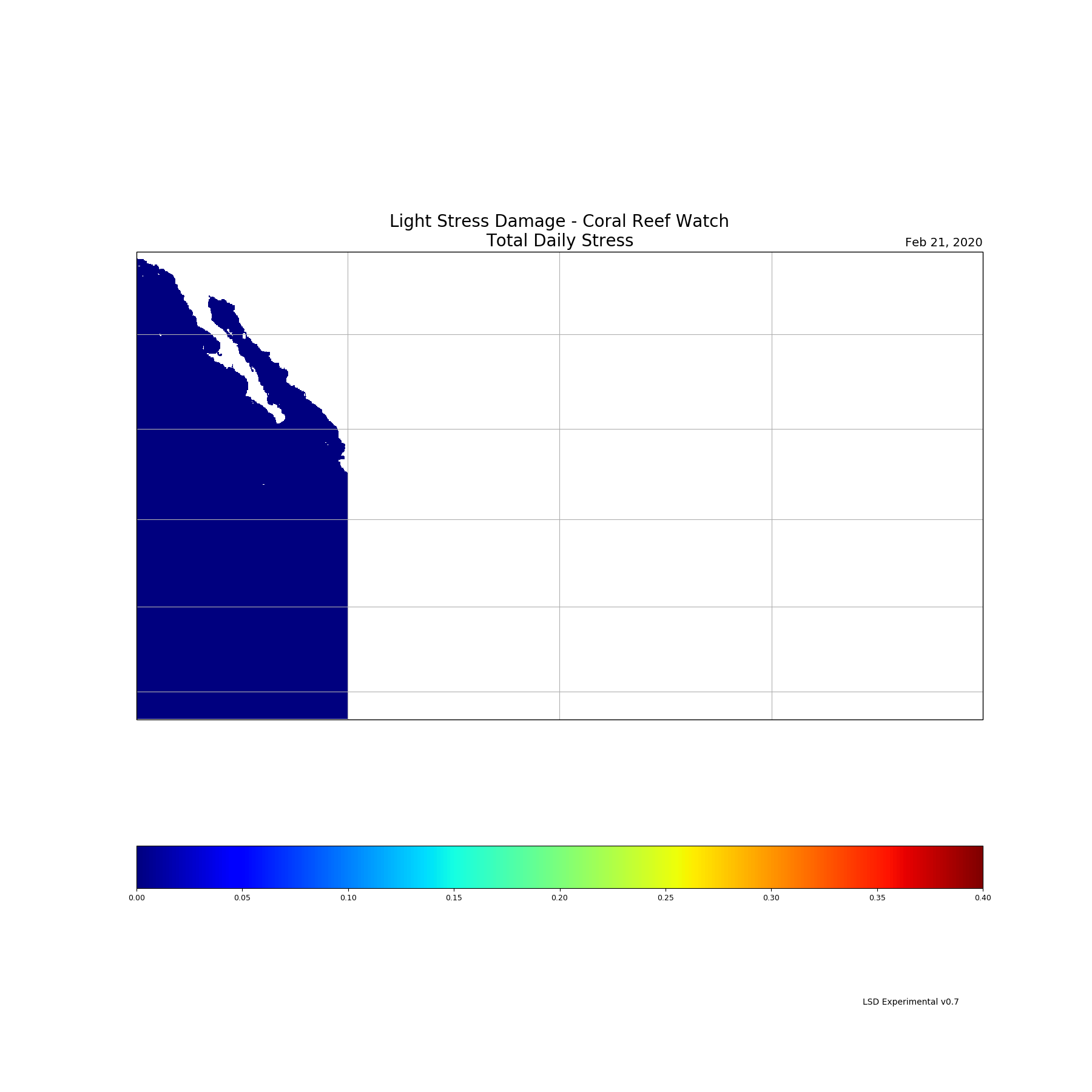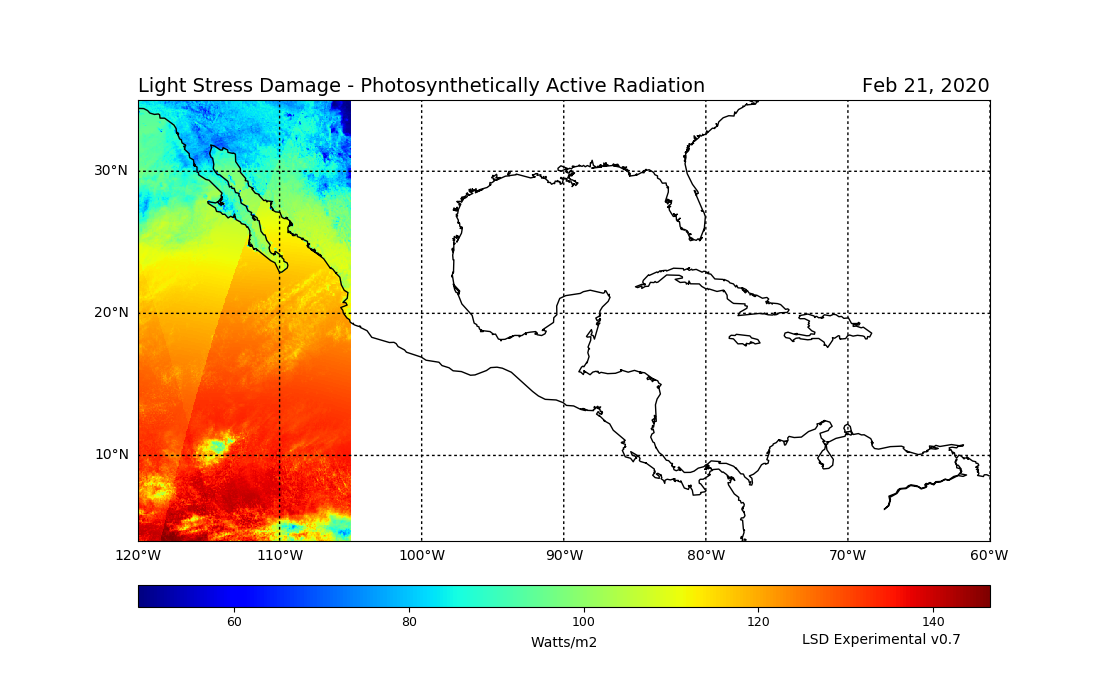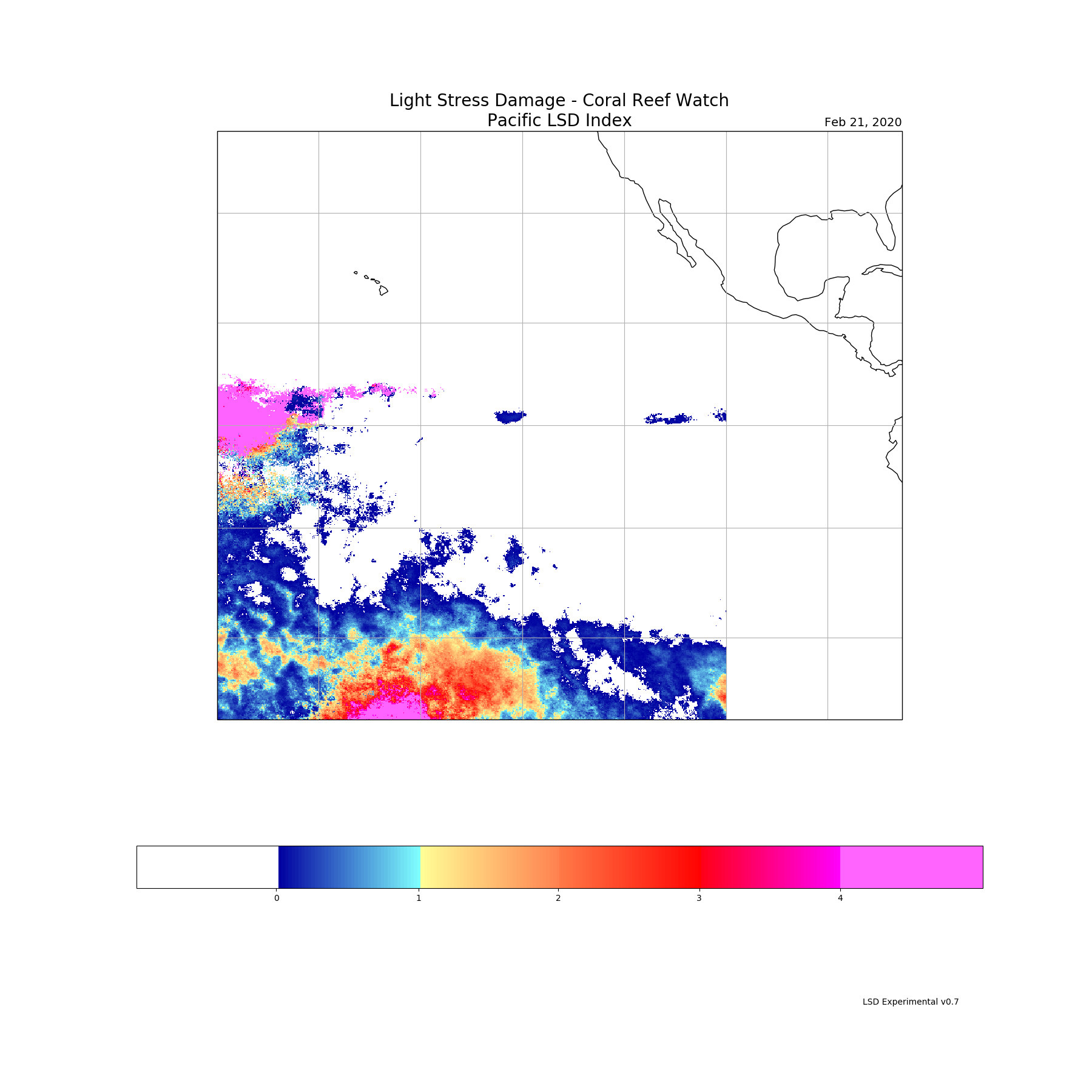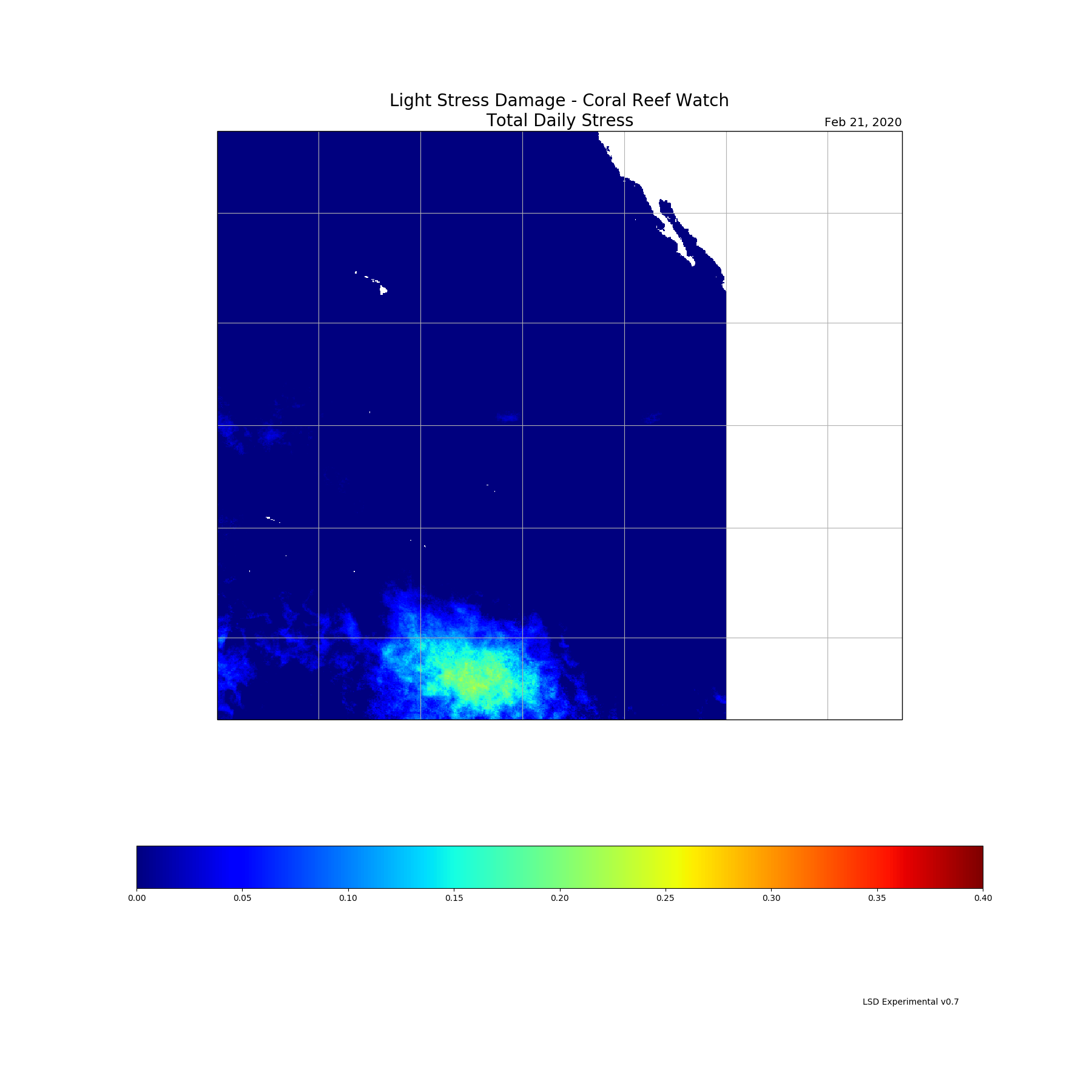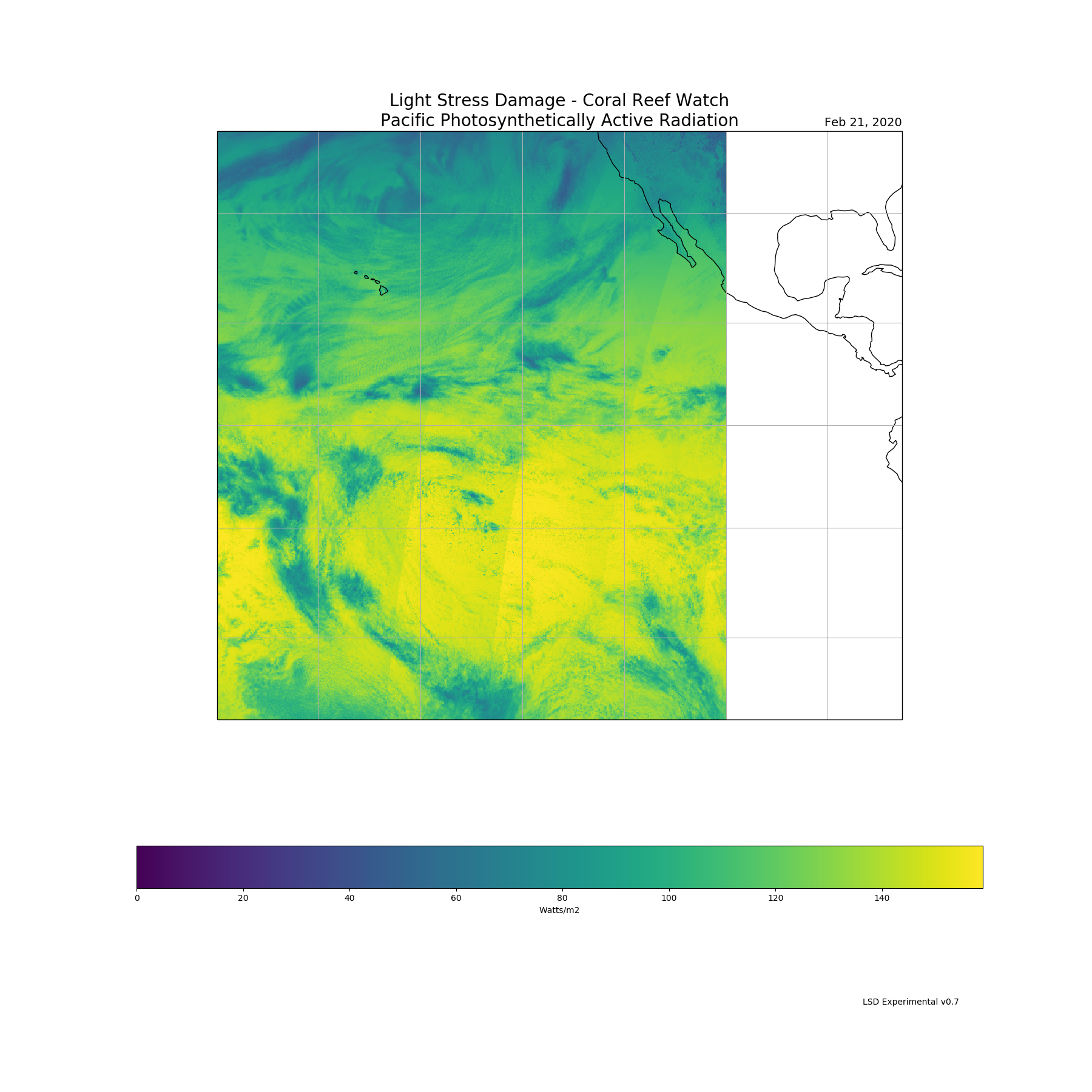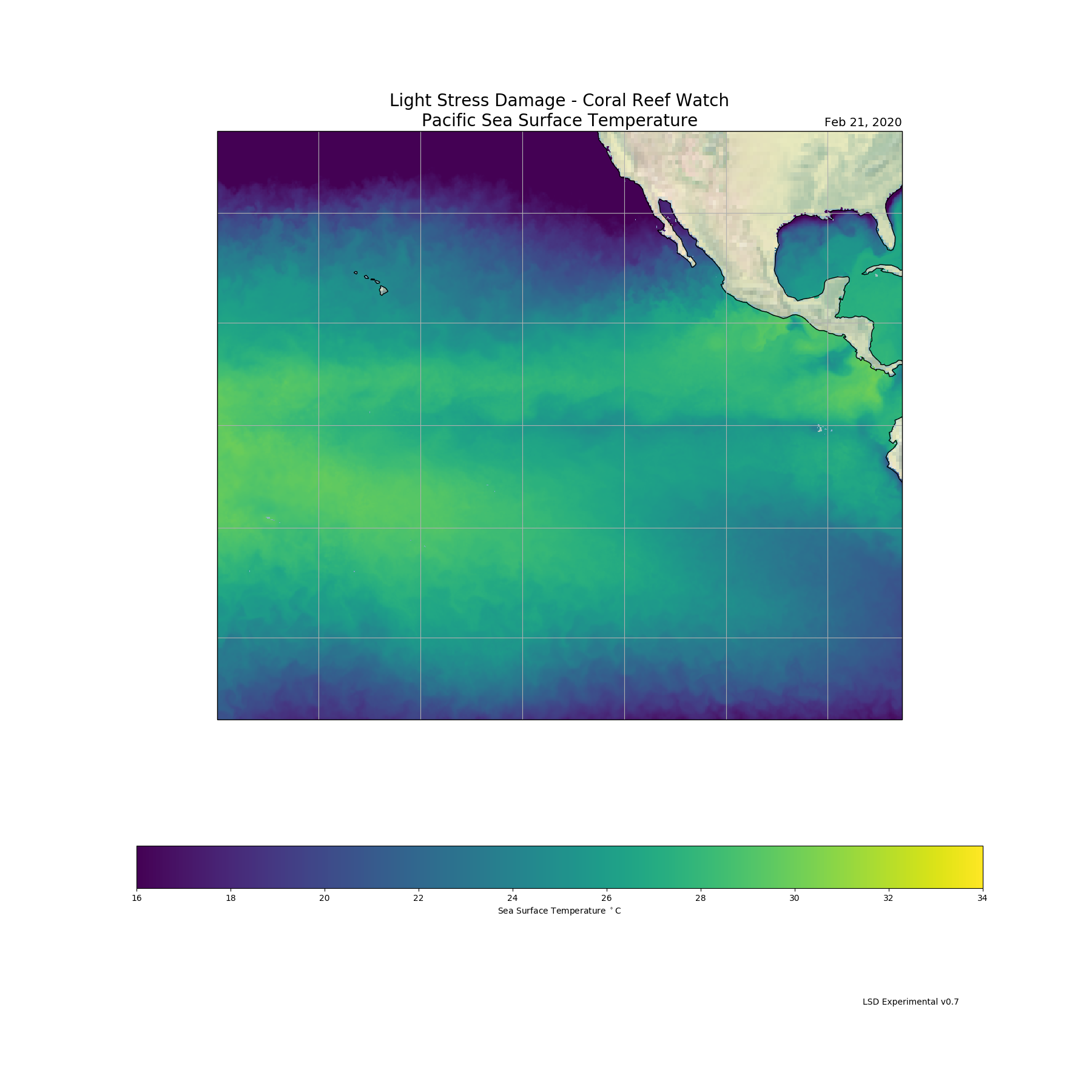(Version 0.7, experimental product, released April 2017)
**NOTE: disruption in image production for the Light Stress Damage product suite below is due to the loss, from both the GOES-15 and GOES-16 satellites, of the GOES Surface and Insolation Products (GSIP), from which we source the Photosynthetically Active Radiation (PAR) data. We continue working on a fix, which will be implemented as soon as possible.**
Download data (netCDF):
LSD Index |
Total Daily Stress |
Photosynthetically Active Radiation (PAR) |
Sea Surface Temperature (SST)
Mass coral bleaching is a phenomenon driven by environmental stress. Currently, all operational satellite products used to monitor stress related to mass coral bleaching events are based solely on sea surface temperature (SST). Whereas temperature is clearly the main environmental driver of this phenomenon, it is actually the stress caused by excessive light that leads to bleaching. The link to temperature is that increased ambient temperature reduces a coral's ability to tolerate light stress. So if the stress from light is already high, the addition of small amounts of heat stress can trigger coral bleaching. If the light stress is less, then more heat stress is needed to trigger bleaching.
NOAA Coral Reef Watch has developed a new experimental product suite, updated daily, based on coral physiology. Called the Light Stress Damage (LSD) product suite, it was originally released in October 2012 for the Greater Caribbean region. It is now in its seventh experimental iteration (version 0.7 [v0.7], April 2017) and has been expanded to include the eastern Pacific Ocean. It is produced at a 5 km spatial resolution, matching the resolution of Coral Reef Watch's next-generation coral bleaching heat stress products. The LSD product suite comprises four outputs for each region: 'LSD Index' is the top left image in each set of four images, 'Total Daily Stress' is the top right image, Photosynthetically Active Radiation (PAR) is the lower left image, and SST is the bottom right image.
Corals acclimate to light within a few weeks. (The LSD product suite described here uses an acclimation rate of six days for half-acclimation.) Since the acclimation is not instantaneous, quick changes in light levels from one day to the next will result in: (1) the addition of stress due to an excess of light if, for instance, the light levels jump from cloudy conditions one day to sunny conditions the next, or (2) the removal of light stress (i.e., the ability for repair) if the reverse occurs. Since the effects of stress are cumulative, over the course of a year the coral photosystem ranges from being far from stressed in the winter months, to being right on the threshold of too much stress in the summer. However, not all yearly cycles are the same and light stress levels differ from one summer to another.
The closer corals are to their stress threshold due to light, the more sensitive they are to other stressors, such as temperature. In the summer, corals are therefore more susceptible to stress than they are in the winter.
The LSD product suite tracks the effect of light stress from day to day. When heat stress occurs, this is then added to the current levels of stress from light, and the sum is compared to the stress threshold of the coral. The resulting value represents the Total Daily Stress, which ranges from 0 to 0.4, and is plotted in the top right image above for each of the Caribbean and Pacific. During a stress event, Total Daily Stress values are accumulated and plotted as an LSD Index (top left image above for each of the Caribbean and Pacific), with values ranging from 0 to >4. Once the LSD Index climbs above 0, it is expected that corals will have begun to pale. As the value continues to increase, corals will begin to bleach. The exact value of the LSD Index for ecologically significant coral bleaching is yet to be determined; however, anecdotal evidence suggests that it will be somewhere around 1.
The current v0.7 LSD product suite was released in September 2016 and enhanced further in April 2017 with the addition of new Pacific coral reef locations and an improved historical climatology. Note that we have maintained the color bar, introduced in September 2015, of the LSD Index image to help coral reef managers and other stakeholders better understand the onset of light/temperature stress, its build-up, and the eventual resultant coral bleaching (and associated mortality). We used a graduation of dark to light blue to signify the beginning and build-up of stress as well as the onset of bleaching. At LSD Index = 1, the color changes to light yellow, signifying that ecologically significant levels of bleaching have been reached. The color then transitions to red at about LSD Index = 3, at which time widespread coral bleaching with some mortality is expected. Finally, the color transitions to pink at about LSD Index = 4, where it is expected that most if not all corals on a reef are bleached and mortality is widespread. We have begun the process of calibrating the LSD Index with bleaching observations from the field. Initial indications from locations such as Looe Key National Marine Sanctuary, Florida Keys; La Parguera, Puerto Rico; Flower Garden Banks, Texas; and reef sites in O‘ahu, Hawai‘i, and the Northwestern Hawaiian Islands, Hawaii are that the onset of bleaching from light and temperature stress, as described by the LSD Index, may be reasonably accurate.

